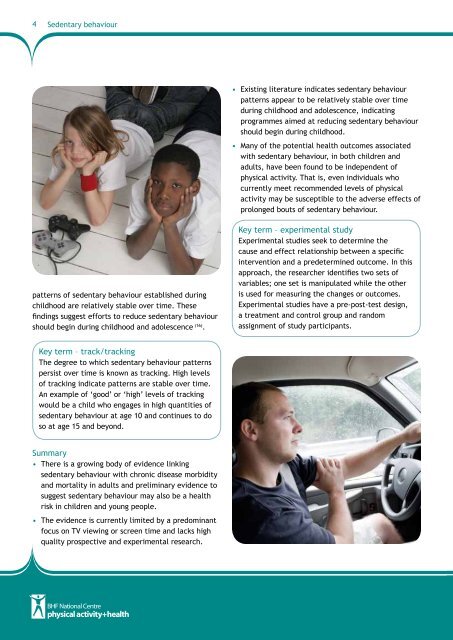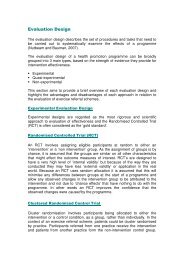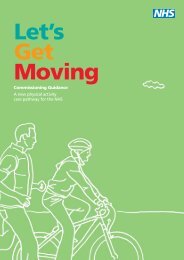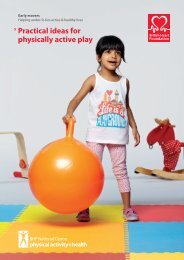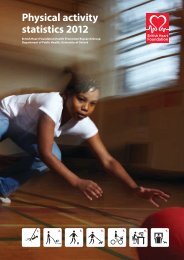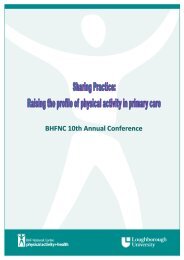Sedentary behaviour evidence briefing - BHF National Centre ...
Sedentary behaviour evidence briefing - BHF National Centre ...
Sedentary behaviour evidence briefing - BHF National Centre ...
Create successful ePaper yourself
Turn your PDF publications into a flip-book with our unique Google optimized e-Paper software.
4<br />
<strong>Sedentary</strong> <strong>behaviour</strong><br />
• Existing literature indicates sedentary <strong>behaviour</strong><br />
patterns appear to be relatively stable over time<br />
during childhood and adolescence, indicating<br />
programmes aimed at reducing sedentary <strong>behaviour</strong><br />
should begin during childhood.<br />
• Many of the potential health outcomes associated<br />
with sedentary <strong>behaviour</strong>, in both children and<br />
adults, have been found to be independent of<br />
physical activity. That is, even individuals who<br />
currently meet recommended levels of physical<br />
activity may be susceptible to the adverse effects of<br />
prolonged bouts of sedentary <strong>behaviour</strong>.<br />
patterns of sedentary <strong>behaviour</strong> established during<br />
childhood are relatively stable over time. These<br />
findings suggest efforts to reduce sedentary <strong>behaviour</strong><br />
should begin during childhood and adolescence (16) .<br />
Key term – experimental study<br />
Experimental studies seek to determine the<br />
cause and effect relationship between a specific<br />
intervention and a predetermined outcome. In this<br />
approach, the researcher identifies two sets of<br />
variables; one set is manipulated while the other<br />
is used for measuring the changes or outcomes.<br />
Experimental studies have a pre-post-test design,<br />
a treatment and control group and random<br />
assignment of study participants.<br />
Key term – track/tracking<br />
The degree to which sedentary <strong>behaviour</strong> patterns<br />
persist over time is known as tracking. High levels<br />
of tracking indicate patterns are stable over time.<br />
An example of ‘good’ or ‘high’ levels of tracking<br />
would be a child who engages in high quantities of<br />
sedentary <strong>behaviour</strong> at age 10 and continues to do<br />
so at age 15 and beyond.<br />
Summary<br />
• There is a growing body of <strong>evidence</strong> linking<br />
sedentary <strong>behaviour</strong> with chronic disease morbidity<br />
and mortality in adults and preliminary <strong>evidence</strong> to<br />
suggest sedentary <strong>behaviour</strong> may also be a health<br />
risk in children and young people.<br />
• The <strong>evidence</strong> is currently limited by a predominant<br />
focus on TV viewing or screen time and lacks high<br />
quality prospective and experimental research.


